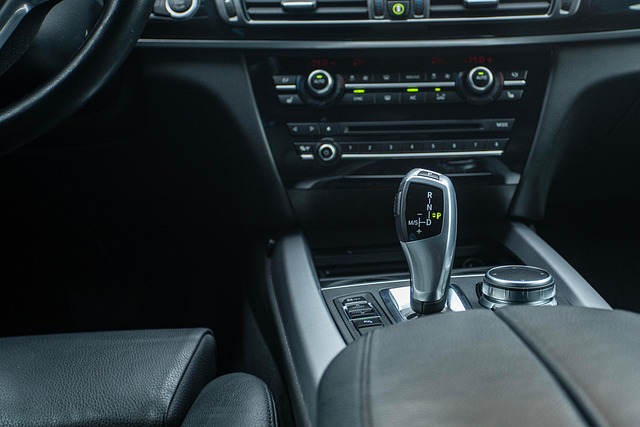Looking to register your car in California? Navigating the process can seem daunting, but with the right preparation, it’s a straightforward task. This guide breaks down the steps involved in registering your vehicle, from understanding the California car registration requirements to paying fees and taxes. We also cover what documents you need for a successful DMV VIN verification, ensuring a smooth experience at the DMV office. Keep your vehicle legally registered and insured with our comprehensive step-by-step instructions.
- Understanding the California Car Registration Process
- Gather Required Documents for DMV VIN Verification
- Visit a California DMV Office for Registration
- Pay the Necessary Fees and Taxes
- Maintain Your Vehicle's Registration and Insurance
Understanding the California Car Registration Process

In California, car registration is a critical process that involves several steps, ensuring vehicles on the road meet safety and environmental standards. The Department of Motor Vehicles (DMV) oversees this process, handling registrations, titles, and driver licenses. Understanding the car registration process begins with the DMV vin verification, which checks the vehicle’s identity using its unique Vehicle Identification Number (VIN). This step is crucial for preventing fraud and ensuring the accuracy of vehicle details.
During the registration, you’ll need to present specific documents, including proof of insurance, a valid driver’s license, and the vehicle’s title. Additionally, a mobile vin verifier or mobile vin inspection can facilitate this process by providing instant, accurate VIN data, making it easier for DMV staff to verify the vehicle’s history and ensure compliance with California’s regulations.
Gather Required Documents for DMV VIN Verification

To register your car in California, you’ll need to go through a process called DMV VIN (Vehicle Identification Number) verification. Before visiting the DMV, ensure you have all the necessary documents ready. These include the completed Form MV-52 (Application for Title and Registration), your vehicle’s registration certificate from the previous state (if applicable), proof of insurance, and identification such as a valid driver’s license or passport.
Additionally, you’ll require a valid DMV-issued driver’s license or ID card, proof of residency in California, and the appropriate fees. For convenience, consider using a mobile vin verification service to obtain your vehicle’s history report, ensuring all details are accurate before proceeding with the registration process at the DMV.
Visit a California DMV Office for Registration

To register your car in California, a visit to a DMV office is an essential step. Bring all necessary documents, including proof of ownership, identification, and any applicable fees. The process typically involves providing detailed information about your vehicle, such as its make, model, year, and unique Vehicle Identification Number (VIN). This information will be verified by the DMV’s system, ensuring accuracy and compliance with California’s registration standards.
One convenient option to streamline this process is utilizing a mobile VIN verifier or conducting a vin inspection online. These services allow you to quickly and accurately gather the required data, making your visit to the DMV more efficient. By providing a comprehensive vehicle history report, including detailed specifications and potential past issues, these tools can help ensure a smooth registration experience.
Pay the Necessary Fees and Taxes

After gathering all the required documents, it’s time to pay the necessary fees and taxes associated with registering your car in California. This process typically involves a fee for vehicle registration, which can vary depending on the type of vehicle and its emissions status. Additionally, you’ll need to pay the Vehicle Identification Number (VIN) verification fee, ensuring that your car meets all safety and environmental standards before issuing a registration.
One convenient option to streamline this process is by utilizing a mobile VIN verifier. These services allow for a quick and efficient vin inspection right from your location. By employing a mobile vin inspection, you can save time and effort, avoiding the need to visit a DMV office. This alternative method is especially beneficial for those with busy schedules or limited mobility.
Maintain Your Vehicle's Registration and Insurance

Maintaining your vehicle’s registration and insurance is a crucial step after successfully registering your car in California. It ensures that you stay compliant with state laws and protects you from potential fines or legal issues. One essential aspect is to keep your Vehicle Identification Number (VIN) accurate and verified. The California Department of Motor Vehicles (DMV) offers a VIN verification process, commonly known as DMV vin inspection, which allows you to confirm the authenticity of your car’s details online or via their mobile app. This service, along with a valid insurance policy, is vital for keeping your vehicle registered and legally operable.
Regularly updating your registration and insurance information is key. If you opt for a mobile vin inspection or choose to conduct a VIN inspection through the DMV’s website, it ensures that any changes in ownership or vehicle details are accurately reflected. This proactive approach not only simplifies the process but also helps in avoiding potential problems down the line, ensuring a smooth driving experience.
Registering a car in California is a straightforward process that involves several key steps, including understanding the DMV VIN verification requirements, gathering necessary documents, visiting a local DMV office, paying applicable fees and taxes, and maintaining proper registration and insurance. By following these guidelines, you can ensure your vehicle’s legal status and enjoy a smooth driving experience in The Golden State.
